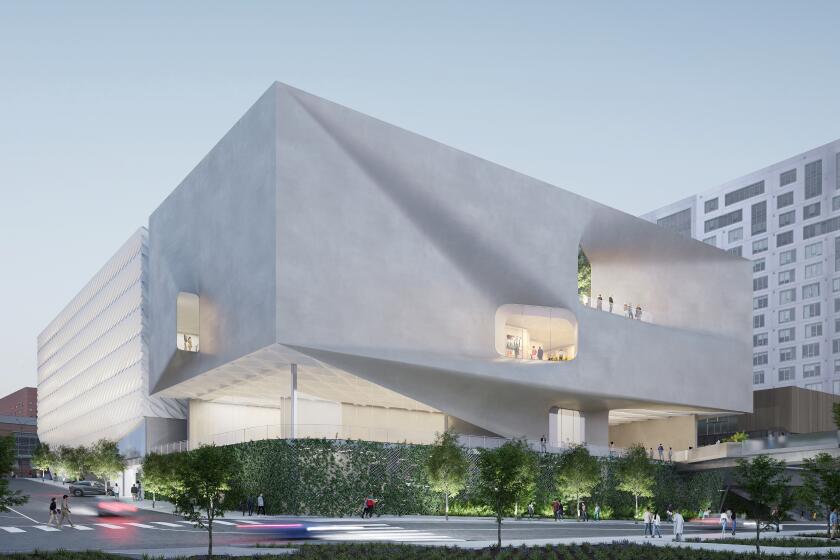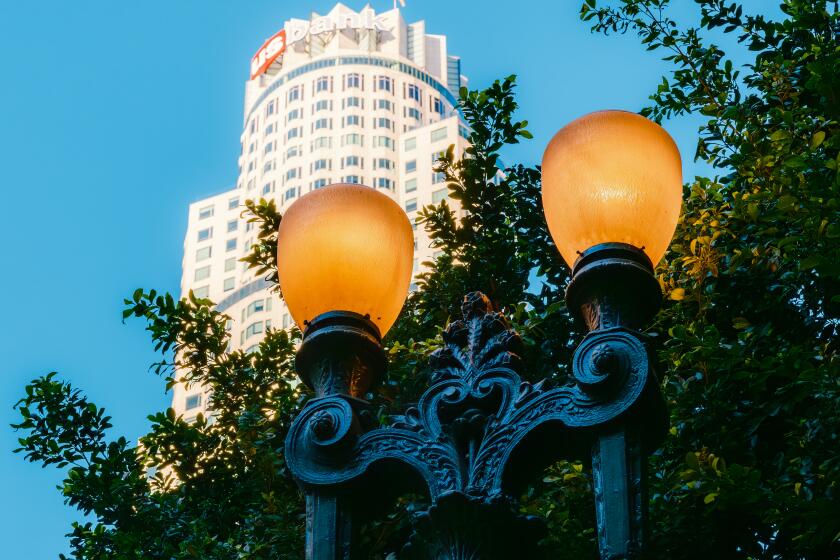‘Almost’ wasn’t good enough
After a two-year restoration that included a forensic analysis of paint color and research into the curious stone creatures perched along the roofline, the 16-story Villa Riviera condominium building in Long Beach will be honored Thursday with a preservation award from the Los Angeles Conservancy.
Built in 1929 by architect Richard D. King, the Tudor Gothic Revival building on East Ocean Boulevard was the first steel-frame structure in Long Beach and was the only building taller than three stories to survive the 1933 Long Beach earthquake, estimated at about 6.4 in magnitude. Various owners altered the building and compromised King’s original design, leading up to repairs and restoration by the current homeowner’s association and the Spectra Co., the contractor for the project.
One of the principal design mysteries: the landmark’s original exterior color.
During a scheduled repainting, the city of Long Beach required the removal of all lead paint from the facade, so more than 10 layers were removed. For the first time in its history, the building was stripped to the base plaster, and what started as a straightforward paint job became a complex quest to identify the Villa Riviera’s original color.
To authenticate the hue and comply with historic preservation guidelines, the team called in a pro.
“Martin Eli Weil, an architectural forensic historian and expert at studying old paint layers, was able to determine the original paint color palette for the building,” said Pete Smay, chairman of the Villa Riviera homeowners association’s architectural committee. Weil’s verdict on the color: a grayish brown that from a distance looks like stone.
Weil, perhaps the city’s most eminent restoration architect and the principal figure in a 2010 Home cover story on the last remaining Greene & Greene house within Los Angeles city limits, died in 2009, a few months after restoration of the Villa Riviera was completed.
“I think we owe an awful lot of the way the building looks now to him,” Smay said.
While the scaffolding was in place for exterior painting, Villa Riviera took the opportunity to restore the grotesques -- often mistakenly called gargoyles -- around the roofline. Some homeowners believe the figures protect the building. However, six of the original 30 grotesques -- including a dog, a bear, a griffin and an eagle, each 5 to 6 feet tall -- have been missing since the 1970s, believed to have been removed by penthouse residents improving their ocean view.
Spectra, whose focus is historic preservation and restoration, replicated the six missing grotesques.
“We made a silicone mold from the existing cement grotesques then re-created the figures with glass fiber concrete,” company founder Ray Adamyk said. The material, commonly called GFRC in the trade, is lightweight and can be used to fashion hollow figures without internal rebar.
Another challenge of the Villa Riviera’s restoration: the main entrance. The original solid bronze doors are believed to have been donated to the war effort during World War II. In their place, inexpensive anodized aluminum glass doors had been installed.
After looking at original plans and historic photographs and determining replica bronze doors would cost about $1 million, Adamyk suggested making new doors out of ornamental iron and plating them with bronze.
“After three months, the doors looked like they were 75 years old, with green patina spots in the corners,” he said. “It was fantastic.”
Adamyk added that of his company’s projects, which have included the casino on Santa Catalina Island, the Pantages Theatre and the Hollywood Roosevelt Hotel, Villa Riviera turned out to be probably one of its best.
The special assessment that homeowners incurred to pay for the work was hotly debated, the restoration team said. Villa Riviera has a nonprofit organization that raises money from public tours, and proceeds likely will go toward renovation of the original entry lamps in the lobby and landscaping that more closely resembles the building’s original 1929 plan.
“The restoration of the ballroom would be the next biggest restoration project,” Smay said, “but that’s years away and would be purely elective for homeowners to fund.”
--



